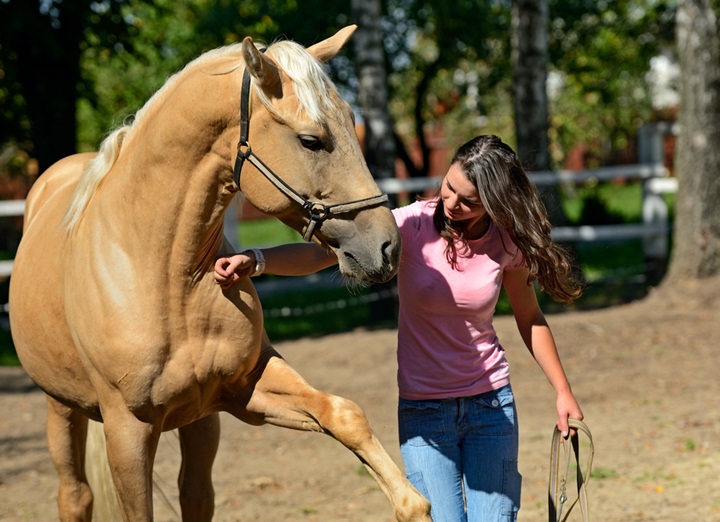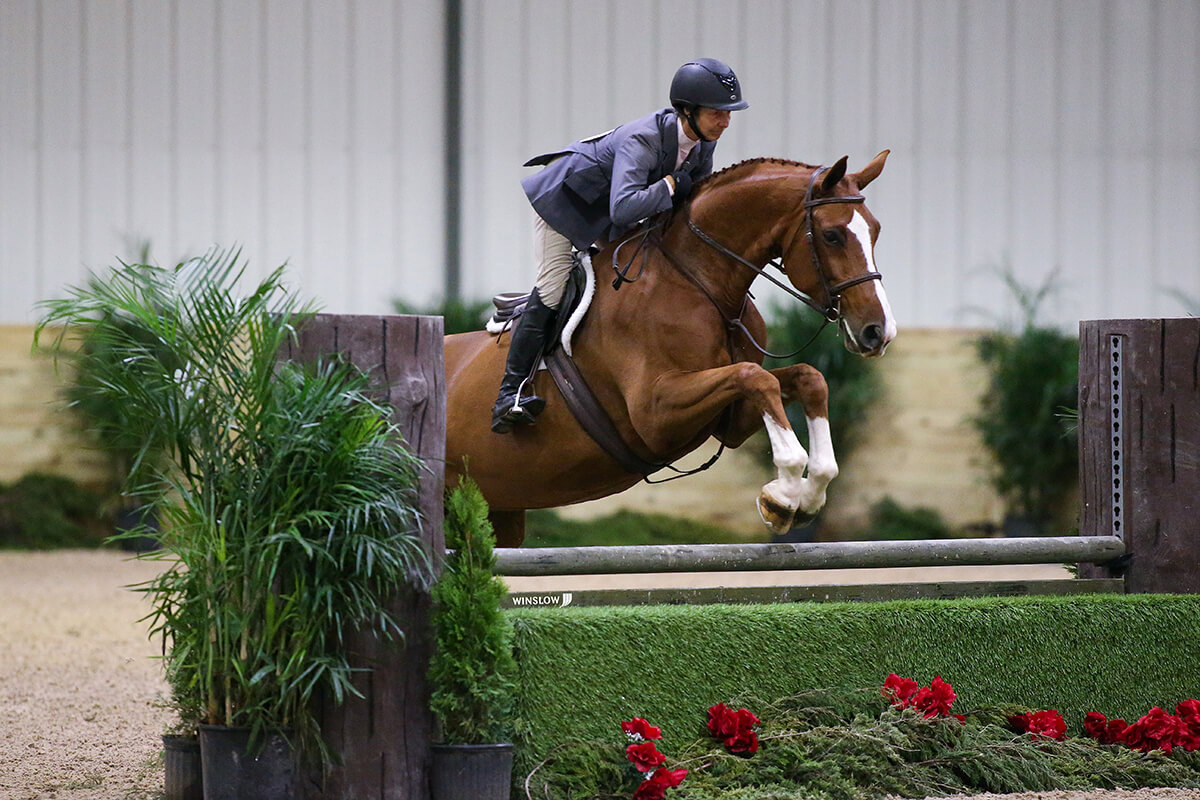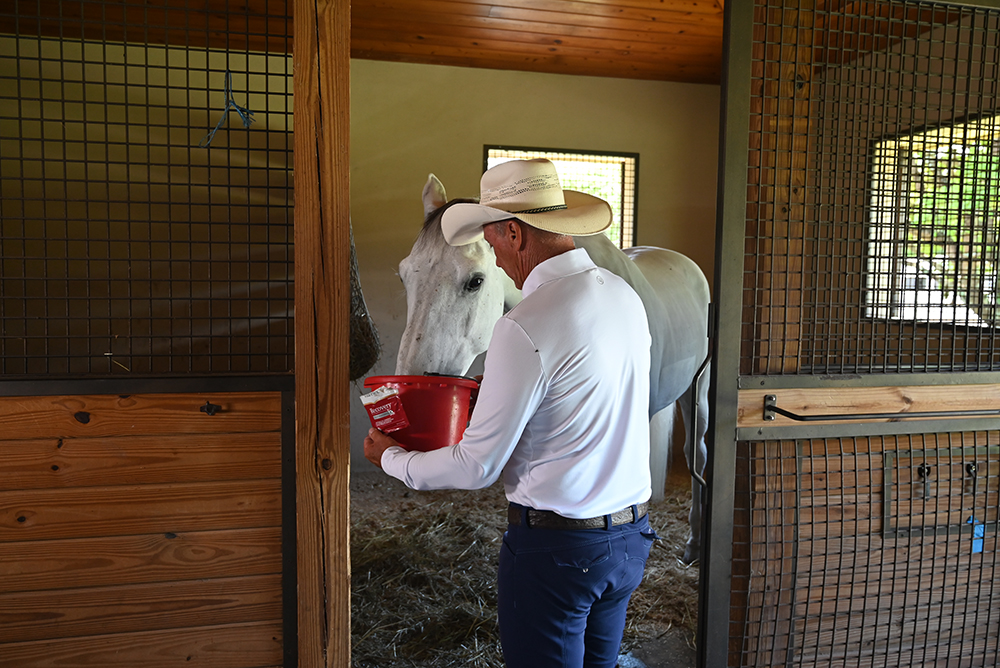3 Fun Groundwork Exercises for Horses
Katie Navarra

Groundwork isn’t just for young or unruly horses. Colt starting champion, Cliff Schadt, Jr., revisits groundwork daily, even with his most well-trained horses.
“It doesn’t matter what discipline you ride or where your horse is in his training, groundwork establishes trust and gets your horse to regard you as a leader,” he explains.
Schadt grew up riding hunter/jumpers before heading out west to work on ranches where he learned from Craig Cameron, Greg Robinson and others. He’s won several colt starting competitions, including one where he was paired with a mustang.
“Having a willing partner is everything and that starts on the ground,” he says.
He shares three of his go-to groundwork exercises that are suitable for every horse. None of these maneuvers require much space so you don’t need an indoor arena. Repetition is the key to success. Practice as often as you can, whether it’s once a day, a few times a week or once a month, the more often you work with your horse on the ground the better your relationship will be in the saddle.
Give & Take
Start in your horse’s stall, a grooming area or a round pen and outfit him in a well fitted halter. Schadt uses a rope halter, but a nylon or leather halter works too. Start by reaching up and placing one hand on your horse’s poll, which is located in between his ears. Push down with about six to eight pounds of pressure. At first, your horse will try to explore or escape by moving his head sideways or up in the air.
“When a horse is scared, he raises his head up in the air to survey what’s going on around him,” he says. “It also is a show of dominance when they put their head higher than us.”
Allow him to work through his reaction but continue to apply the pressure. Give him the chance to think through the situation and process what you’re asking. The instant your horse drops his head, even if it’s just an inch, release the pressure, rub and pet on him. Avoid forcing his head down, Schadt advises, this exercise is not a show of force. Repeat until the horse requires less and less pressure and is willing to drop his nose to the ground.
“I’ll work on this exercise until I can use two fingers on the side of the halter and the horse drops his nose to the ground,” he says. “As a bonus, it makes haltering and bridling easier.”
Side to side
Once your horse is comfortable lowering his head with the lightest touch, it’s time to increase the difficulty. Ask for lateral yields. Some people call this a carrot stretch. By holding a carrot or treat by the horse’s ribcage they are encouraging him to bend. Schadt prefers not to use treats.
“The big thing is to allow the horse to figure out how to get out of pressure and reward him with a release immediately with petting and praise. It teaches him problem-solving skills,” he says.
Again, use a well-fitted halter. Stand beside your horse’s shoulder and gently pull sideways on the lead rope, encouraging your horse to bend his nose towards his shoulder and ribcage. Repeat three to five times on both sides. Give your horse a few seconds to relax in between each stretch. Ask for bigger and bigger bends as the horse becomes more comfortable.
“None of these exercises are about strength,” he says. “You have to be persistent enough with the pressure so that the horse explores how to get out, but it shouldn’t be a battle of wills.”
Reverse it
Backing isn’t natural for horses. Watch your horse in the pasture or the round pen and it’s unlikely he’ll back up on his own. That’s because horses are naturally forward thinking animals. Teaching them to back in hand establishes your role as the leader and sets the foundation for backing under saddle.
Stand on the left side of your horse with your shoulder at the midpoint of his neck and face his tail. Hold either where the knot is tied under the chin on a rope halter or where a snap is connected to the lead. Push the lead straight back into the horse’s chest.
“Slowly move your hand left to right to encourage their feet to move,” he says. “As soon as he takes, even one step back, immediately release and reward him. Then walk forward and do it again.”
It may take as much as 10 to 15 pounds of pressure. As a horse learns to move backward with cadence, you can increase the degree of difficulty by asking him to back a figure-8 or through a set of logs.
“Getting their mind soft through backing also has practical uses like backing a horse out of a trailer or backing them into a grooming stall,” he says.
Increase the degree of difficulty by giving your horse more lead rope and asking him to back away from you. Schadt can stand at the end of a 14 foot line and simply point at his horse and he’ll back up.
“In all these exercises, our intent and belief that we can get this done is integral to success,” he says. “Ray Hunt always said, ‘our horses know when we know and when we don’t.”
Groundwork provides a foundation that horses can build upon as they learn to execute more complex tasks. The fundamentals are always a good place to return when a horse is scared or confused.
“My horses never outgrow groundwork,” Schadt concludes. “I blend it in with my daily routine and they are the tools I come back to if I feel a horse bracing in the face or neck.”


